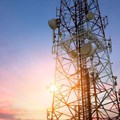
New Cape Town/Brazil subsea cable to boost SA broadband

Over 65% of South African’s, age 16+, is now online with an annual growth of over 7%. Video streaming, cloud storage, mobile phone, gaming etc. all need fast, secure, reliable global data streaming.
South Africa’s demand for broadband is insatiable and we need infrastructure to support that growth.
The good news is that USA-based Seaborn Networks has announced its plans to build the first and only, faster direct subsea fibre optic cable system to connect Cape Town (ie. South Africa) to Brazil with onward, direct (therefore faster) connectivity to New York, USA.
We chatted to Seaborn’s COO Andy Bax to find out more about plans, relevancy, impact and operational decisions for this new ‘SABR’ system build between South Africa/Brazil/USA.
 Why take on this project?
Why take on this project?
The decision to build from Cape Town to Brazil was a simple one. First of all, there is no direct route today from Africa to the US – a fact that when you consider the hundreds of submarine cables around the world is astounding.
When we built Seabras-1 from the US to Sao Paulo in Southern Brazil we built additional on-ramps to the cable at strategic points along the route. One of these was in Northern Brazil.
We have always considered that the most economically sound path for a cable route from South Africa to the US to be the shortest possible route across the Atlantic to a new, ultra-high capacity subsea fibre cable connecting to the US. Our South Africa to Brazil (SABR) cable is the shortest path across the Atlantic, landing in Northern Brazil with a direct connection into Seabras-1 to the US. This is also incredibly more stable than today’s existing routes which unfortunately seem to consistently suffer from faults, embargoes or acts of vandalism.
A connection to Cape Town also provides for easier onward connections to the Eastern side of the continent as well as into Asia, all through existing subsea cables or those already under construction. An example of this is the recently announced agreement between Seaborn and IOX to jointly provide services between the US, South Africa, Mauritius and India through the two companies subsea fibre cables.
 What do you plan to invest in this project?
What do you plan to invest in this project?The cost of building SABR will be somewhere in the region of $120 to $140m. Add to that the more than $500m spent to build Seabras-1 and the level of investment required to achieve an end-to-end connection from Cape Town to the US is more than $600m.
 Wow! That's no Mickey Mouse investment... In simple terms, what will this new cable mean for the average South African and what does it mean for businesses?
Wow! That's no Mickey Mouse investment... In simple terms, what will this new cable mean for the average South African and what does it mean for businesses?South Africa and the continent as a whole will benefit from the SABR cable. Currently, telecommunications traffic bound for the US from South Africa traverses up either the East or West coast of Africa stopping off at numerous locations before going through the Middle East or southern and central Europe before going from Northern Europe to the US.
This is both a long and arduous route from a telecoms perspective as the number of stops along the way increase the likelihood of equipment and human-caused faults. Add to that the geo-political risks of passing through volatile regions of the world and the picture is not one that creates comfort for telecom service providers. And the same applies to the rest of the continent also.
SABR will provide a direct connection to Northern Brazil and then connect directly to our Seabras-1 for a non-stop path to New York.
Think of it as a choice between a flight from Cape Town to New York with a dozen stops or a flight with one stop… easy decision as to which one you’d want to take to be sure of getting to the other end without delays or bad connections.
International telecom capacity from the region as a whole is also very expensive when compared to the rest of the world as incumbent operators control the vast majority of access to international cable routes and as a result competition is difficult to promote. As an independent cable operator, Seaborn provides international capacity to any and all providers, be they large or small on an equal basis. As such, SABR will provide open access to critical connectivity for telecom service providers.
In addition, for those service providers committing to purchase capacity on SABR ahead of the build phase, they will only pay their proportional share of the actual build cost of SABR, that share being determined by how much of the cable capacity they want to use.
SABR will be capable of carrying 30-40Tbps of capacity so there is plenty available for everyone!
Because they don’t have to use all the capacity they commit to purchase on day one, and because they are paying for this capacity on a cost basis, this means that small, medium and large service providers in the region will finally be able to purchase the size of capacity they believe they will need over the coming years on a fair and equal footing, as opposed to only being able to purchase expensive capacity when they are already running out.
SABR will enable providers of all sizes to grow and importantly provide better quality of service to their customers, as opposed to the expensive international capacity available today which actually restricts growth and limits the amount of bandwidth provided to end consumers.
 When we talk about 'faster internet speeds', just exactly how fast do you mean? Will the user notice a dramatic difference? Or who will notice the difference?
When we talk about 'faster internet speeds', just exactly how fast do you mean? Will the user notice a dramatic difference? Or who will notice the difference?Fast internet speeds for end consumers are basically defined by two factors.
First of all, the amount of capacity that your service provider enables you to use directly impacts the “speed” at which you can interact online, be that streaming content or just downloading emails.
A lack of capacity can result in content buffering as you try to stream it or downloads taking a very long time.
The second factor, and one that is very important to content providers, gaming companies, and financial markets is the latency between the two endpoints on the network.
Latency is the time for a piece of information to get from one end to the other and in telecommunications is measured in milliseconds.
The new route using SABR and Seabras-1 will reduce that latency by approximately 30%. Other than those companies already mentioned, hard-line gamers would be the only end users to probably notice the difference, although it will be significant to them too.  How does this affect South African telco operators?
How does this affect South African telco operators?All telecom service providers will be able to benefit from the SABR project, be they small, medium, or large. Access to affordable capacity is critical to those companies being able to increase the bandwidth they provide to their end users whilst competing openly in the marketplace on service and price.
It is important for these operators to realise the benefits of being involved and being involved early in the process to ensure that they get access to this valuable international capacity at cost on SABR, since once the cable is under construction that opportunity might well not be there.
The ability to compete on an equal footing is key to any business succeeding and Seaborn will bring that capability to all telecoms service providers with the SABR cable.
 What do you plan to invest in this project?
What do you plan to invest in this project?The cost of building SABR will be somewhere in the region of $120 to $140m. Add to that the more than $500m spent to build Seabras-1 and the level of investment required to achieve an end-to-end connection from Cape Town to the US is more than $600m.
 Wow! That's no Mickey Mouse investment... In simple terms, what will this new cable mean for the average South African and what does it mean for businesses?
Wow! That's no Mickey Mouse investment... In simple terms, what will this new cable mean for the average South African and what does it mean for businesses?South Africa and the continent as a whole will benefit from the SABR cable. Currently, telecommunications traffic bound for the US from South Africa traverses up either the East or West coast of Africa stopping off at numerous locations before going through the Middle East or southern and central Europe before going from Northern Europe to the US.
 Wow! That's no Mickey Mouse investment... In simple terms, what will this new cable mean for the average South African and what does it mean for businesses?
Wow! That's no Mickey Mouse investment... In simple terms, what will this new cable mean for the average South African and what does it mean for businesses?South Africa and the continent as a whole will benefit from the SABR cable. Currently, telecommunications traffic bound for the US from South Africa traverses up either the East or West coast of Africa stopping off at numerous locations before going through the Middle East or southern and central Europe before going from Northern Europe to the US.
 When we talk about 'faster internet speeds', just exactly how fast do you mean? Will the user notice a dramatic difference? Or who will notice the difference?
When we talk about 'faster internet speeds', just exactly how fast do you mean? Will the user notice a dramatic difference? Or who will notice the difference?Fast internet speeds for end consumers are basically defined by two factors.
First of all, the amount of capacity that your service provider enables you to use directly impacts the “speed” at which you can interact online, be that streaming content or just downloading emails.
A lack of capacity can result in content buffering as you try to stream it or downloads taking a very long time.
The second factor, and one that is very important to content providers, gaming companies, and financial markets is the latency between the two endpoints on the network.
Latency is the time for a piece of information to get from one end to the other and in telecommunications is measured in milliseconds.
 How does this affect South African telco operators?
How does this affect South African telco operators?All telecom service providers will be able to benefit from the SABR project, be they small, medium, or large. Access to affordable capacity is critical to those companies being able to increase the bandwidth they provide to their end users whilst competing openly in the marketplace on service and price.
It is important for these operators to realise the benefits of being involved and being involved early in the process to ensure that they get access to this valuable international capacity at cost on SABR, since once the cable is under construction that opportunity might well not be there.
The ability to compete on an equal footing is key to any business succeeding and Seaborn will bring that capability to all telecoms service providers with the SABR cable.
 How does this affect South African telco operators?
How does this affect South African telco operators?All telecom service providers will be able to benefit from the SABR project, be they small, medium, or large. Access to affordable capacity is critical to those companies being able to increase the bandwidth they provide to their end users whilst competing openly in the marketplace on service and price.
It is important for these operators to realise the benefits of being involved and being involved early in the process to ensure that they get access to this valuable international capacity at cost on SABR, since once the cable is under construction that opportunity might well not be there.
About Ilse van den Berg
View my profile and articles...

